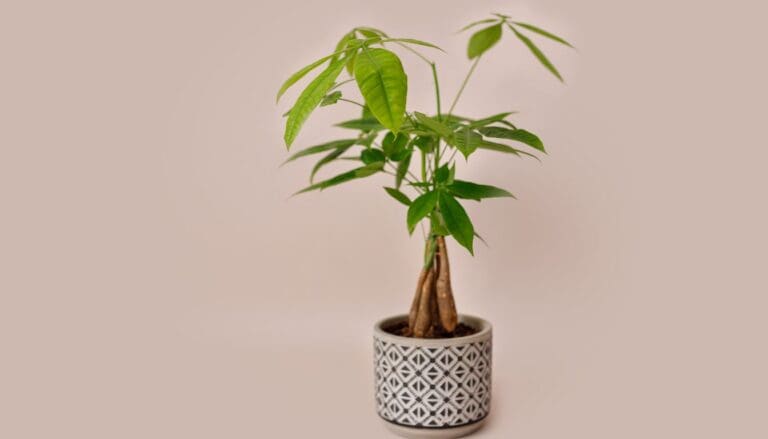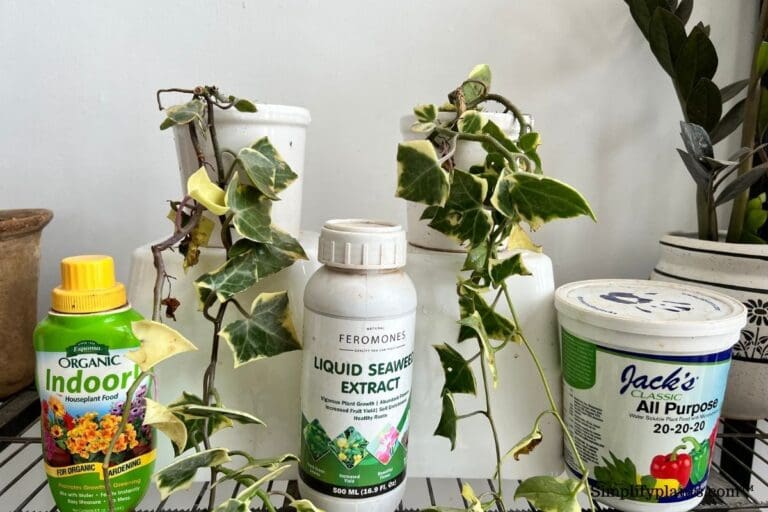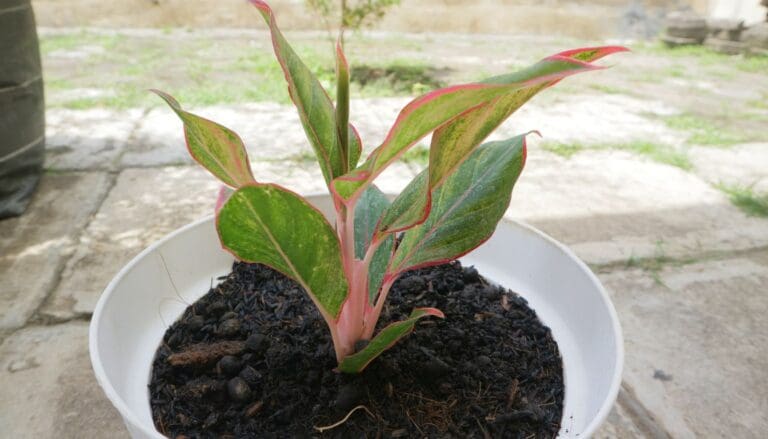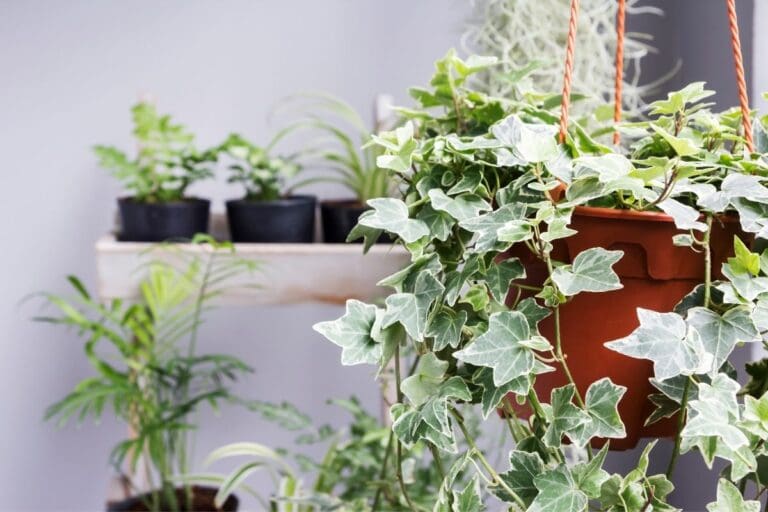How Do You Revive A Dying Peperomia? (Possible Problems+Solution)
Peperomia is a hardy tropical plant that does not require much attention. It might be difficult for you to watch your peperomia dying despite you doing everything to revive it. If something is not right with its care routine or due to unfavorable external conditions, your peperomia can show signs of death.
If you want to revive your peperomia, you first need to understand what works and what doesn’t. Here is what you need to follow.
To save a dying peperomia:
- Stop watering your peperomia.
- Move them in a brightly lit spot.
- Let the soil dry out completely and provide proper air circulation.
- Loosen the topsoil to allow better aeration of the roots.
- Water the plant only when the soil gets dry.
- Mist some neem oil occasionally.
If your peperomia seems to be dying, it does not mean that you cannot revive it. Identifying the problems, fixing them, and taking the proper steps to prevent them will help you revive your dying peperomia and keep it healthy.
This article will focus on all the possible problems that might be leading to the loss of your dear peperomia. We will discuss the causes, solutions, and prevention methods. So keep reading.

Please note: Simplify Plants is reader-supported. Some links in the post are affiliate links and I get a commission from purchases made through links in the post.
What is wrong with my peperomia?
The signs are what make you think about what is wrong with your peperomia. Yellow leaves, brown leaves, stunted growth, etc., will make you wonder if your peperomia is dying.
Some common signs that you will come across are:
- Yellow leaves
- Brown leaves
- Droopy foliage
- Holes in leaves
- Leaves falling off
- Foul odor from the soil
- Stunted growth
How do you revive peperomia?
How you save your peperomia will depend upon the reason behind your plant’s condition.
Once you identify the problems, you can take problem-based actions to revive your peperomia and prevent it from returning to that condition again.
So, let’s discuss the possible problems, along with their solutions and preventions.
Overwatered peperomia plant

Peperomia can get overwatered if you water it like other tropical houseplants in your house. Peperomia retains water in its succulent-like leaves and requires water only when the topsoil dries out.
But if you water the plant as per a schedule without checking the soil, it will get overwatered. And an overwatered peperomia can have a lot of problems.
Possible problems:
- Brown edges on leaves
- Brown leaves
- Falling leaves
- Pest infestation
- Root rot
Solutions:
- Stop watering for a few days if the peperomia is overwatered.
- Tilt the pot to get the standing water out of the pot.
- Place the peperomia in a sunny location with enough indirect light to help the soil get dry.
- Verify that there is good airflow around the plant.
- Repot the plant in case of root rot. (We will discuss this later)
Prevention:
- Never water without checking the soil.
- Check the soil by using a hygrometer.
- You can use a stick, skewer, or moisture meter to check the soil’s moisture. If the soil doesn’t stick to your finger, you can water your peperomia.
- Keep a check on the drainage holes and ensure that the excess water is draining out.
- Don’t follow any watering schedule blindly.
- Do not water in the evening or at night.
- Change your watering pattern when the season changes.
- Always rely on the soil to tell you if your peperomia requires water or not.
Also read: How To Save Overwatered Peperomia?
Underwatered peperomia plant

The treatment of an underwatered peperomia is relatively easier than treating an overwatered peperomia. However, that doesn’t indicate that you should keep your peperomia thirsty for an extended period.
Possible problems:
- Droopy leaves
- Brown edges on leaves
- Crisp brown leaves
- Slow growth
- Soil pulling away
- Stressed and unhealthy looking plant
Solution:
- Prune the damaged leaves that have no chance of revival.
- Water your peperomia thoroughly. First, give the plant some water and wait for 1-2 minutes. Then, you can thoroughly water it.
- Water the peperomia until the excess water starts coming out of the drainage holes.
- Use the bottom-watering method to water the plant.
- You can mist the peperomia to add some moisture.
Prevention:
- Follow a watering schedule so that you don’t forget to water your peperomia.
- As a thumb rule, always check the soil before watering your peperomia. Water if the soil is dry. Wait for a few days if the soil is moist.
- On average, peperomia needs to be watered once in one or two weeks.
- The water requirement of your peperomia will depend upon the external conditions like light, temperature, and humidity of your area.
- Adjust the watering schedule as per the season.
- You can use the capillary method if you are planning to go on a vacation.
- Drench the soil after watering.
Also read: How Often To Water Peperomia? (Peperomia Water Requirements)
Temperature fluctuations

One thing that most houseplants can’t tolerate is temperature fluctuations, and peperomia is no different.
Temperature fluctuations will cause stress to your peperomia. It will either bring many problems to your plant or elevate the existing problems.
Possible problems:
- Stress
- Brown leaves
- Stunted growth
Solution:
- Prune the affected parts to reduce the stress.
- Maintain the ideal temperature. For peperomia, the ideal temperatures range between 55-75°F.
- Do not expose the peperomia to direct sunlight as it will affect the plant’s health. Move it to an area with indirect light instead.
- If the temperature drops below 40°F during winter, place the peperomia near a heat source to manipulate the temperature. Keep a safe distance so that there is no leaf burn.
Prevention:
- Always keep your peperomia between the temperatures 55-70°F.
- Do not let the plant remain in areas where temperatures drop below 40°F.
- Tweak the position of your peperomia according to the season changes.
Low humidity

Peperomia comes from regions where it experiences humidity levels above 90%. But as a houseplant, it can adjust with average room humidity levels ranging between 40-50%.
But if you reside in a cold region or during winter, the humidity levels can drop below average. And that can give rise to a few issues.
Possible problems:
- Brown tips
- Dried and crisp leaves
Solution:
- Try to maintain high humidity levels.
- Group your peperomia with other humidity-loving plants to increase the humidity.
- You can mist the peperomia occasionally.
- Use a humidifier to maintain the correct humidity levels.
- Don’t expose the peperomia to direct sunlight.
Prevention:
- Maintain high humidity levels around the peperomia to avoid all problems.
- Use a pebble tray by placing pebbles on a tray and filling it with water. Place the plant on it in a way that the water doesn’t get inside the pot through the drainage holes. The water evaporating from the tray will add moisture and increase the humidity.
- Do not give less water to the plant as that will worsen the situation.
Also read: Do Peperomia Like To Be Misted? (+Humidity Guide)
Root rot

Root rot is a deadly disease caused mainly due to overwatering. Other reasons can aggravate the problem, such as a poor drainage system or a wrong soil mix.
Possible problems:
- Yellow or brown leaves
- Droopy foliage
- Wilting leaves
- Falling leaves
- Mushy roots
- Stinky soil
- Stunted growth
Solution:
- Prune the affected leaves and stems that have turned soft or got discolored.
- Do not go overboard with pruning. If there is a lot of damage, don’t prune more than 50% at once.
- Now you must check the roots. Take the peperomia out of its pot and try to remove all the soil from the root balls.
- Be careful as you don’t want to damage the healthy roots.
- Use dish soap to wash the roots for a few minutes to kill all the bacteria and fungus.
- Spread the roots on paper and place them in a bright area that gets indirect light and allows the roots to dry out.
- You can dip the roots in hydrogen peroxide solution for a few minutes.
- Get a pot that is a size bigger than the size of your peperomia, and make sure it has enough drainage holes.
- Put some pebbles before you add a well-draining soil mix to the pot. This will prevent the drainage holes from getting blocked.
- Repot the peperomia in that pot and provide all the ideal conditions for it.
Tips:
- Disinfect the scissors with rubbing alcohol before and after using it in the affected peperomia.
- Keep the healthy cuttings that you have pruned. You can use these cuttings to propagate new plants in case you kill your plant while repotting it.
Prevention:
The proper care and conditions are enough to prevent root rot.
- Water the peperomia only when the soil is dry and doesn’t stick to your finger.
- Use a well-draining soil mix that will not retain too much water.
- Use the correct-sized pot that has suitable drainage holes. Ensure that the drainage holes are working.
- Place your peperomia in an area that will allow the soil to dry faster.
- Clear the cache pot whenever it collects water so that it doesn’t get into the soil from the drainage holes.
- Make sure that the peperomia is placed in a spot that has good airflow.
Also read: How To Save Peperomia From Root Rot? (Signs+Causes+Fix)
Lighting issues

Peperomia enjoys bright and indirect sunlight like most houseplants do. Intense direct sunlight and low light – both are unsuitable for your peperomia.
Possible problems:
- Sunburn
- Droopy leaves
- Brown leaves
- Crisp or soft leaves depending on the lighting
Solution:
- Direct light is the light that hits your plant directly without any filter in between. This kind of light is too intense for your peperomia. And if that is what it is getting, you need to relocate the plant to an area with indirect light exposure.
- You can place your peperomia in front of a window that has a curtain or blind. This will help to filter out the direct sunlight.
- If your peperomia is not getting enough light, move it to a brighter spot or use grow lights to give it sufficient light.
Prevention:
- If your peperomia is staying indoors, place it near a window that gets enough light throughout the day. Make sure that the window has curtains on it.
- If your peperomia is outdoors, place it in a shaded area that protects it from the harsh rays of the sun.
- You can expose the peperomia to direct sunlight for a few hours during the winter when the intensity of the light decreases.
- Rotate the plant after few days to ensure that it receives light on all sides.
Also read: What Kind Of Light Do Peperomia Need? (Peperomia Light Requirements)
Pest infestation

Peperomia is not prone to pest attacks. But a plant that is living in a damp environment will be vulnerable to pests. Common houseplant pests that attack peperomia are scales, aphids, spider mites, mealybugs, etc.
A pest infestation can be deadly as the pests spread fast and cause severe damage. But you can still revive your peperomia from this.
Possible problems:
- Brown spots on leaves
- White spots on leaves
- Holes on leaves
- Leaves falling off
- A weak plant
- Stunted growth
Solution:
- Isolate your peperomia so that other plants around it don’t get infected.
- Prune the affected areas of the plant.
- Handpick the visible bugs.
- Mix neem oil with water and create a diluted spray to treat the pests.
- Spray this solution all over the plant. Spray the areas where the pests reside – undersides of leaves, the base of the stem, between the nodes, and areas where the leaves start.
- Spray this every other day till you get rid of all the pests.
- You can also add a few drops of dish soap to the neem oil solution.
- You can dip a cotton ball in isopropyl alcohol and apply it to the affected areas.
- Spray the solution in the evening so that it doesn’t interfere with the plant’s usual activities.
- Wash your peperomia with plain water the next day.
Prevention:
- Keep an eye on your plant to make sure it is doing well. An unhealthy peperomia is more likely to get a pest infestation.
- Spray neem oil solution on your peperomia once a month to avoid pest infestation.
- Do not overwater your peperomia, as that will create the ideal environment for pests to thrive.
Also read: Do Peperomia Plants Attract Bugs? (Identification+How To Get Rid)
Final words

An unhealthy-looking plant doesn’t mean that your peperomia is dying. But if you keep neglecting it even after noticing the signs, your peperomia will die.
You must check your plant from time to time to understand if the plant has any problems or is doing well.
- Prune the plant to stop the overgrowth or leggings.
- Provide the right amount of light, water, and fertilizer.
- Use well-draining soil that will dry up fast and not make the soil soggy.
- Rotate the plant to provide light to all sides.
- Spray neem oil solution on the plant every month.
- Change your care routine in winter.
With the right actions, you can revive your dying peperomia. Once it recovers, take care of it based on its needs to prevent further problems.
Ref: University of Florida, Sage Journal, University of Vermont, New Jersey Agricultural Experiment Station Rutgers, The University of Arkansas, Britannica, Wikipedia, Peperomia Diseases, NC State University.
Recommended Garden Supplies
| Product Image | Our Recommended Gardening Supplies | Check Offers! |
|---|---|---|
Top Top
Top
Top
Top
Top
Top
Top
Top | rePotme Houseplant and Tropical Classic Potting Soil Mix | Check Offer On Amazon |
 Top
Top
Top
Top
Top
Top
Top
Top | Espoma Organic Indoor Plant Food | Check Offer On Amazon |
 Top
Top
Top
Top
Top
Top
Top
Top | GooingTop LED Grow Light 6000K Full Spectrum Clip Plant Growing Lamp | Check Offer On Amazon |
 Top
Top
Top
Top
Top
Top
Top
Top | Soil Moisture Meter | Check Offer On Amazon |
 Top
Top
Top
Top
Top
Top
Top
Top | Govee Hygrometer Thermometer, Bluetooth Enabled! | Check Offer On Amazon |
 Top
Top | LEVOIT Humidifiers for Large Room(Best For Plants) | Check Offer On Amazon |
 Top
Top
Top
Top
Top
Top
Top
Top | Upgraded DIY Automatic Drip Irrigation Kit, 15 Potted Houseplants Support | Check Offer On Amazon |
 Top
Top
Top
Top
Top
Top
Top
Top | Stainless Steel Heavy Duty Gardening Tool Set | Check Offer On Amazon |
 Top
Top
Top
Top
Top
Top
Top
Top | Bonide Insecticidal Soap | Check Offer On Amazon |
 Top
Top
Top
Top
Top
Top
Top
Top | Bonide 32 oz Spray Neem Oil for Organic Gardening | Check Offer On Amazon |
 Top
Top
Top
Top
Top
Top
Top
Top | Garden Safe Fungicide | Check Offer On Amazon |






